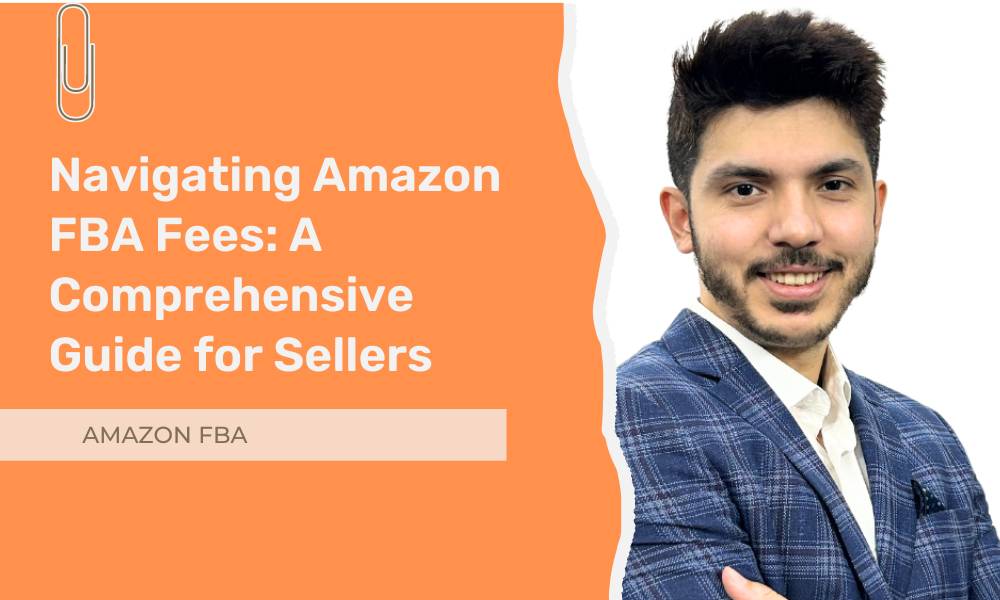Navigating Amazon FBA Fees: A Comprehensive Guide for Sellers

Amazon FBA (Fulfillment by Amazon) is a powerful platform for e-commerce success. However, understanding the intricacies of Amazon FBA fees is vital for sellers looking to thrive in this competitive marketplace. This comprehensive guide aims to demystify the world of FBA fees, offering insights into referral fees, fulfillment costs, storage expenses, and more. By the end, you’ll be equipped to make informed decisions and optimize your Amazon FBA business for profitability.
Understanding Referral Fees
Referral fees are one of the most fundamental costs for FBA sellers. Referral fees might differ between product categories and are calculated as a percentage of the item’s sale price. It often lies between the ranges of 15% and 20%, with the majority falling between 6% and 45%. So, sellers should factor in these costs when setting product prices, as they affect both the item’s cost and the cost of shipping.
Let us tell you that reducing referral fees involves optimizing product listings, enhancing competitiveness, and offering exceptional customer service. Moreover, accurate knowledge of referral fees is crucial for pricing products competitively and maximizing profitability on Amazon.
Fulfillment Fees: Packing and Shipping
Fulfillment fees cover the price of keeping, packaging, and shipping your goods. The cost of fulfillment varies based on the weight, size, and kind of product—standard or enormous. Smaller, lighter items generally incur lower fulfillment fees, making them cost-effective for sellers. These fees encompass storage in Amazon’s warehouses, packing your products, and shipping them to customers.
Efficiently managing your inventory can help reduce storage costs, while proper packaging minimizes packing expenses. To get this service efficiently, you can contact Scale Fortune. You can also get many other Amazon-related services from here, such as private labels.
Long-Term Storage Fees
Long-term storage fees are assessed on items stored in Amazon warehouses for over 365 days. They are typically charged biannually, on February 15th and August 15th. These fees apply to items in standard-size storage and oversized storage categories. Long-term storage fees can be substantial, motivating sellers to manage their inventory more effectively.
Strategies to avoid these fees include setting up automatic removals, optimizing product listings, and using inventory management tools. Regularly reviewing your inventory and conducting removals or discounts can help prevent accumulating long-term storage fees. Above all, keeping a close eye on your inventory turnover is essential for minimizing long-term storage costs.
Storage Fees: Monthly and Overweight
Monthly storage fees are based on the volume (cubic feet) of space your products occupy in Amazon’s warehouses. These fees are calculated based on the daily average volume, and rates vary seasonally. Monthly storage fees apply to items in both standard-size and oversized categories.
Storage fees can significantly impact your profitability, making efficient inventory management essential. We can say that regularly reviewing your inventory, removing slow-moving products, and optimizing storage space is key. No doubt, monitoring your storage fees helps maintain a lean inventory and control overall FBA costs effectively.
Removal and Disposal Fees
Amazon charges removal fees for sellers who wish to return or remove inventory from their warehouses. These fees apply to both standard and oversized items and depend on the product category. Additionally, removal fees are assessed per unit and can vary based on whether items are returned to you or disposed of by Amazon.
Moreover, disposal fees are generally lower than return fees and cover the cost of disposing of unsellable inventory. Both removal and disposal fees are per-item charges and can accumulate if not managed properly. Further, monitoring inventory turnover and strategically removing orders can help minimize these costs.
Sales Tax Collection and Remittance
Amazon offers a program known as Marketplace Facilitator to collect and remit sales tax on behalf of sellers. Depending on your business and the states you operate in, you may be automatically enrolled in MTC. For your information, Amazon calculates and collects the appropriate sales tax for orders shipped to customers in states with MTC.
In addition, you can view the tax collected in your seller account and access detailed reports for tax compliance. Sellers are responsible for remitting tax for sales not facilitated by Amazon, such as self-fulfilled orders. Thus, staying compliant with tax laws and remitting tax in a timely manner is crucial to avoid penalties.
Conclusion
In the dynamic world of Amazon FBA, mastering the intricacies of fees is paramount for success. This guide has illuminated the path, shedding light on referral fees, fulfillment costs, storage expenses, and more. By navigating these waters with knowledge, sellers can optimize their FBA businesses and sail toward profitability.





